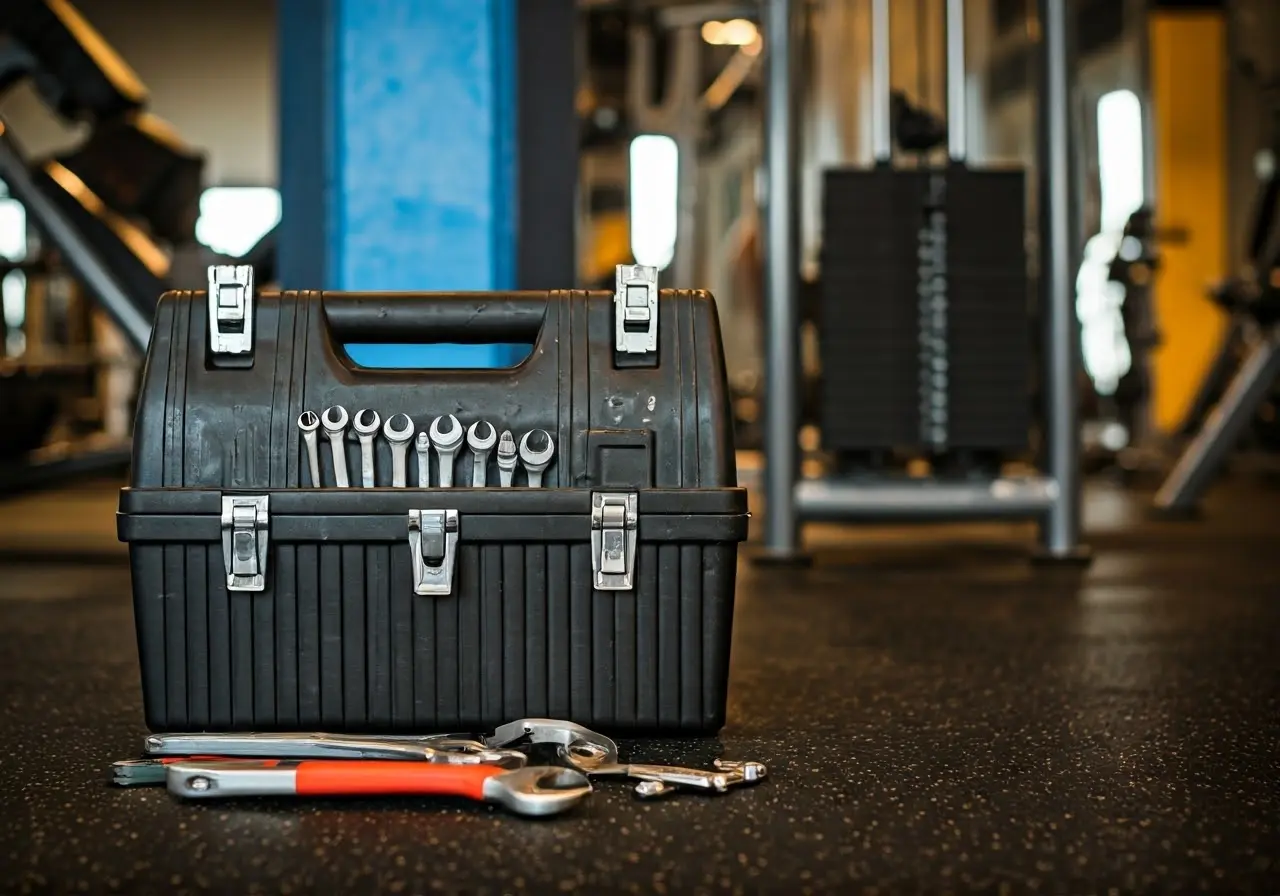Gym equipment is essential for effective workouts, but like any machinery, it can require repairs over time. In this blog, we’ll explore the most common issues that affect gym equipment and explain how you can address them. Whether you’re a gym owner or a fitness enthusiast, understanding these problems will help you keep your equipment in top shape.

Wear and Tear in Moving Parts
Over time, the moving parts of gym equipment, such as pedals and belts, wear out. Regular inspections can prevent significant damage. For example, on a treadmill, the belt is constantly being treaded on by users of varying sizes, leading to natural wear. Regular inspections for signs of wear like fraying can be vital in catching issues early and ensuring the safety of all gym users.
Addressing wear and tear promptly not only reduces the chance of equipment failure but also extends the lifespan of the equipment. It’s essential to understand that while some wear is inevitable, ignoring it can lead to more significant issues, such as malfunctioning, which Fitness Equipment Repair Specialist LLC notes can derail your fitness journey if left unchecked. Next time you’re at the gym, listen for unusual sounds, which can indicate a need for maintenance.
For machines like ellipticals and stationary bikes, regular maintenance tasks include checking for belt tension and ensuring all moving parts are adequately lubricated. This approach prevents excess friction, which can cause significant wear over time. As suggested by Fix-It Club, routine maintenance, including lubrication, is key to minimizing repairs and preventing unexpected breakdowns.
Electrical Malfunctions
Issues with electronic consoles and wiring can disrupt workouts. Periodically checking for any electrical issues is crucial for smooth operation. Octane Fitness emphasizes the need for regular diagnostic checks to identify and address potential electronic issues proactively.
Electrical malfunctions can stem from various causes, such as power surges or loose connections. Proactive measures, including routine checks of wiring and electronic components, ensure that these systems are functioning correctly and safely. Additionally, having stable power sources and using surge protectors can significantly reduce the likelihood of electrical issues interrupting your workouts.
Mechanical Failures
Mechanical issues, like loose bolts or misaligned parts, can seriously affect performance. Tightening and realigning components regularly helps avoid these problems. YR Fitness advises regular inspections for such mechanical issues, ensuring each component is in its proper place to prevent equipment downtime.
Mechanical failures often involve the intricate parts of gym machines, such as pulleys or tension systems. Regular maintenance that includes checking these components can prevent breakdowns that might otherwise leave your machines out of commission. A structured maintenance schedule helps avert these issues, promoting a seamless workout experience for users.
Rust and Corrosion
Moist environments can lead to rust and corrosion, especially on metal parts. Regular cleaning and proper storage can prevent this. The folks at Fitness Machine Technician highlight the importance of protecting metal components from moisture to repel rust’s damaging effects.
Using protective coatings and maintaining a dry environment can also be effective strategies to combat rust and corrosion. These preventative measures ensure that your machines stay looking new and functioning properly. Cleaning routines should focus on all metal surfaces, ensuring no area is overlooked, no matter how minor it may seem.
Slipping or Fraying Cables
Worn cables can lead to equipment failure. Regularly inspecting and replacing these cables ensures continued safety and performance. Cables in multi-gym systems are susceptible to wear from constant use, YR Fitness notes, making their regular inspection crucial for safe operation.
Maintaining cable integrity is essential because it directly impacts the machine’s efficiency and the user’s safety. Gym equipment manufacturers often provide specifications for the types and strengths of cables required. Adhering to these guidelines and conducting frequent checks can reduce the risk of any treatment-related injuries. Early detection of fraying or slipping can avoid larger, costly repairs.
Ensuring Longevity for Your Gym Equipment
Regular maintenance and timely repairs can significantly extend the life of your gym equipment. By keeping an eye out for the common issues discussed, you’ll ensure a safer and more reliable workout environment. Remember, when in doubt, calling a professional for gym equipment repair is always a wise choice to prevent further damage.
